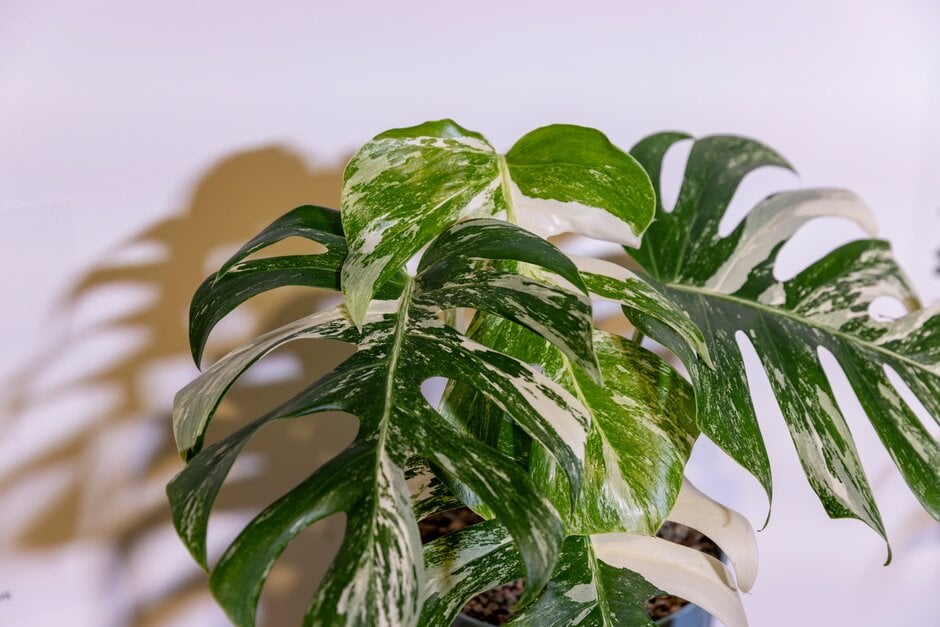Size
Ultimate height
2.5–4 metresTime to ultimate height
10–20 yearsUltimate spread
1–1.5 metresGrowing conditions
Moisture
Moist but well–drainedpH
Acid, Alkaline, NeutralColour & scent
| Stem | Flower | Foliage | Fruit | |
| Spring | Cream | Green White | ||
|---|---|---|---|---|
| Summer | Green White | Cream | ||
| Autumn | Green White | |||
| Winter | Green White |
Position
- Partial shade
Aspect
South–facing or East–facing or West–facing
Exposure
Sheltered Hardiness
H1BBotanical details
- Family
- Araceae
- Native to GB / Ireland
- No
- Foliage
- Evergreen
- Habit
- Climbing
- Potentially harmful
- Harmful if eaten, skin/eye irritant. Wear gloves and other protective equipment when handling Pets: Harmful if eaten, skin/eye irritant. For further information and contact numbers regarding pets, see the HTA guide to potentially harmful plants
- Genus
Monstera are evergreen climbing shrubs with aerial roots, and usually ovate leaves which are often pinnately cut or lobed; arum-like flowerheads with white spathes arise from the leaf axils on mature plants
- Name status
Accepted
How to grow
Cultivation
Under glass, grow in a peat-free, loam-based potting compost in bright, indirect light with moderate to high humidity. Water when in growth and keep just moist in winter. Apply a balanced liquid fertiliser monthly when in growth. May be kept outdoors in warmer regions, but at temperatures no less than 18°C, in most moderately fertile, humus-rich soils in partial shade. See houseplant cultivation and Monstera for further information
Propagation
Propagate by seed sown at 18 to 24°C as soon or by stem cuttings
Suggested planting locations and garden types
- Patio and container plants
- Low Maintenance
Pruning
Pruning group 11 in spring
Pests
May be susceptible to scale insects and glasshouse red spider mite
Diseases
Generally disease-free
Love gardening
Sign up to receive regular gardening tips, inspiration, offers and more
View our Privacy Policy
Get involved
The Royal Horticultural Society is the UK’s leading gardening charity. We aim to enrich everyone’s life through plants, and make the UK a greener and more beautiful place.

